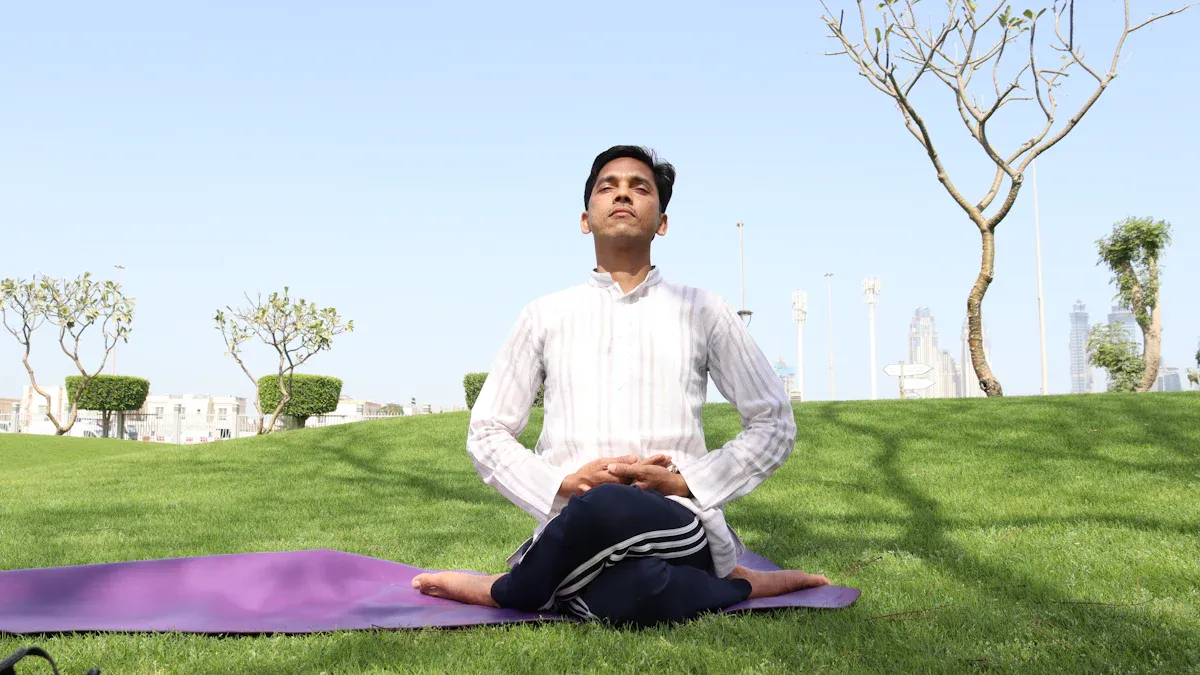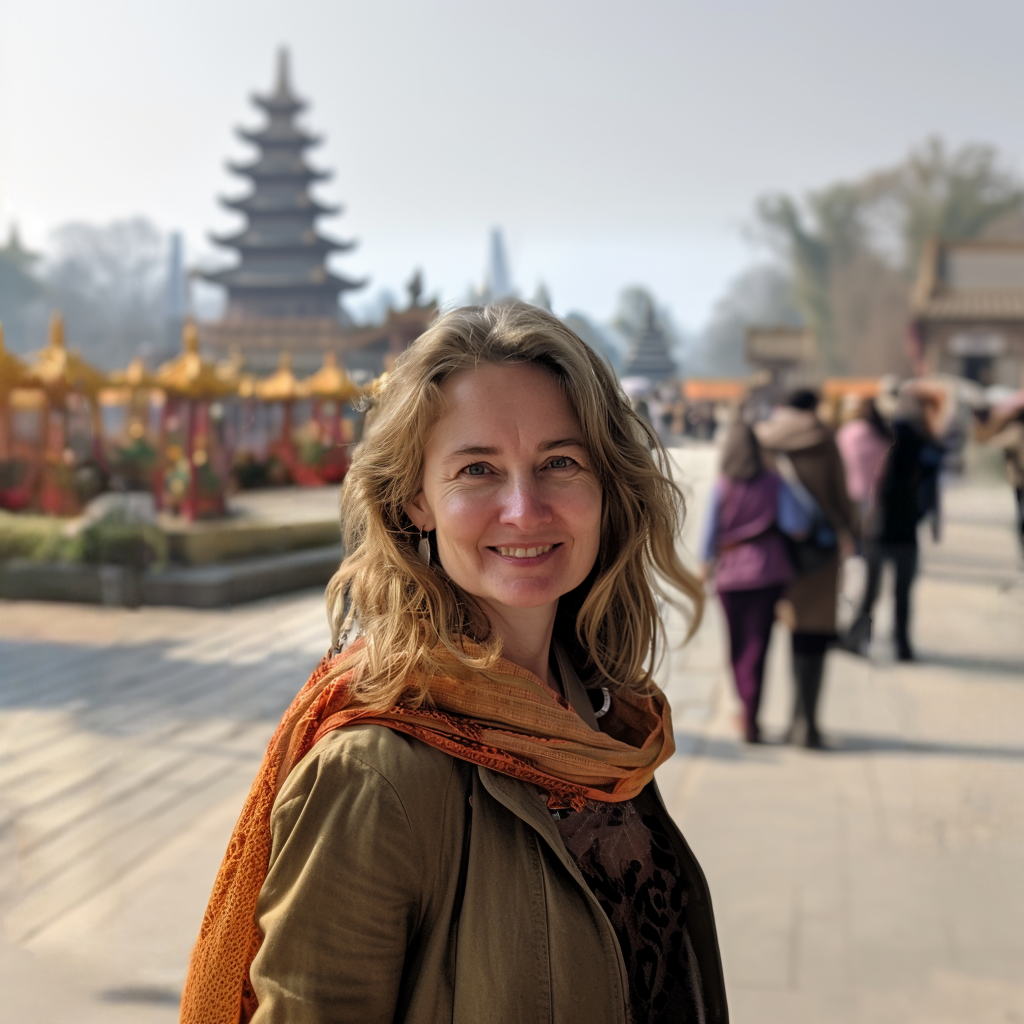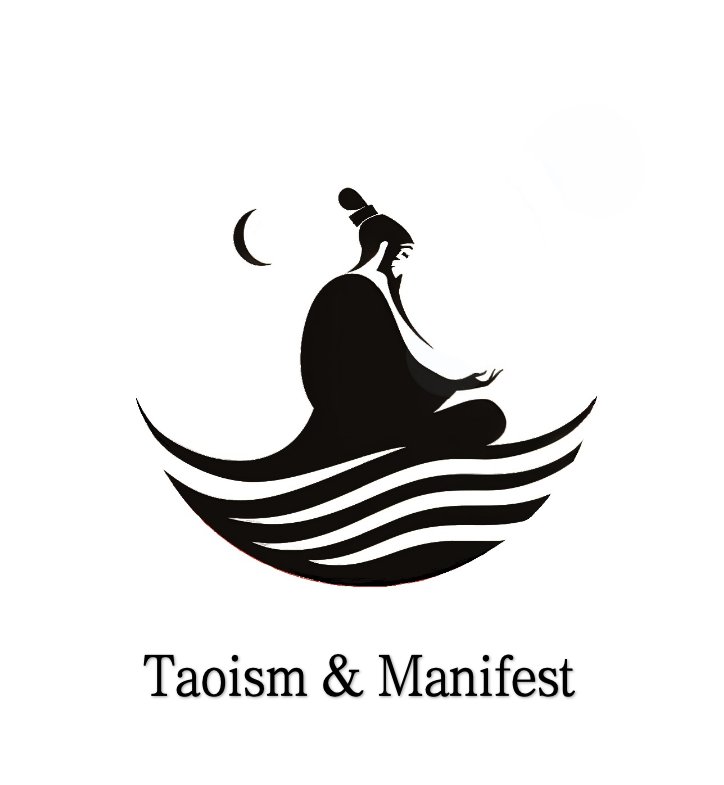
You can embrace the present, even in a city filled with noise and movement. Taoism teaches that slow living does not depend on your surroundings. When you slow down and notice each moment, your mind and body feel more balanced. Research shows that slow practices like mindful movement and breathing can boost your mood and lower stress in urban life. You find more joy when you stay present, move slow, and let each day unfold at its own pace.
Key Takeaways
Slow living in the city helps you feel calm and balanced by paying attention to each moment.
Use Taoist ideas like Wu Wei to act with ease and go with the flow instead of forcing things.
Choose simple habits like mindful breathing, single-tasking, or slow coffee rituals to reduce stress.
Spend time in green spaces or bring nature into your home to refresh your mind and body.
Start small with easy steps and build habits that make city life more peaceful and joyful.
Taoism in the City

Urban Pace vs. Natural Rhythm
You live in a city where everything moves fast. The lights stay on all night, and noise fills the air. This urban pace can make you feel rushed and disconnected from your natural rhythm. Taoism teaches you to notice these differences. When you follow the taoist path, you learn that slow living in the city is not only possible but also rewarding.
Urban living often brings stress from noise, pollution, and crowded spaces. These stressors can affect your mood, sleep, and even your health.
Neighborhoods with more green spaces and social support help you feel better and sleep well.
When you slow down, you give your body and mind a chance to rest and recover.
Tip: Try to find small moments of quiet during your day. Even a few minutes of slow breathing or a walk in a park can help you reconnect with your natural rhythm.
Harmony and Adaptation
Taoism encourages you to seek harmony, even in busy places. You do not need to escape the city to find peace. Instead, you can practice Wu Wei, or effortless action, by choosing the path of least resistance. This means you act through inaction, letting things unfold naturally without forcing them.
Many people in cities use taoist principles to adapt. You might see someone practicing tai chi in a park or meditating in a quiet corner. These practices help you find balance and harmony with nature, even among tall buildings. The principles of Wu Wei remind you that slow living in the city is about moving with the flow, not against it.
Embrace simplicity and let go of what you cannot control.
Build connections with others to create a sense of harmony in your community.
Use effortless actions to solve problems, choosing the path of least resistance.
Taoism shows you that harmony comes from within. When you follow the taoist path, you discover that slow living is not about doing less, but about doing things with presence and ease. You can find joy and balance by practicing action through inaction, even in the heart of the city.
Slow Living Mindset

What Is Slow Living?
You may wonder what slow living really means. Slow living is a way of life where you choose to be present and live with intention. You focus on doing less, but you do each thing with care and attention. This slow lifestyle helps you enjoy each moment, even in a busy city. You create peaceful spaces for yourself and set boundaries to protect your mental health. You might start your day with a slow morning routine, like journaling or enjoying a quiet cup of tea. You spend time outdoors, walk in nature, or read a book without rushing.
Slow living is not just about moving slowly. It is about living with intention and making choices that match your values. You practice mindfulness and give yourself time for stillness. This helps you feel calm and balanced. You learn to say no to things that do not matter, so you can say yes to what brings you joy. By embracing slow living, you resist the pressure to always do more and move faster. You find happiness in simple things and connect with your surroundings.
Taoism and Slow Living
Taoism teaches you to live in harmony with the natural flow of life. You follow the Tao, or "The Way," by practicing Wu Wei, which means effortless action or action through inaction. This idea encourages you to let things unfold naturally and to trust the process. When you live effortlessly, you find balance and peace, even in a fast-paced city.
A taoist lifestyle values stillness and presence. You learn to pause, breathe, and notice the world around you. Taoism reminds you that a balanced life comes from living with intention and not forcing things. You can practice slow living in the city by following these principles. You move with the flow, not against it. You allow yourself to rest and reflect. This unhurried life helps you feel more present and connected.
By embracing slow living and Taoism, you discover that you do not need to escape the city to find peace. You can create a sanctuary wherever you are. Living with intention, practicing Wu Wei, and seeking stillness will help you thrive and enjoy each day.
Embracing Simplicity
Declutter Your Day
You can start your journey toward simplicity by decluttering your day. When you wake up, look at your schedule. Ask yourself which tasks truly matter. You do not need to fill every hour with activities. Instead, choose a few important things and give them your full attention. This helps you feel less stressed and more focused.
Try this simple exercise:
Write down everything you plan to do today.
Circle the top three tasks that matter most.
Let go of the rest or move them to another day.
Tip: When you clear away extra tasks, you create space for calm and joy. You give yourself permission to slow down and enjoy each moment.
Simple Choices in Urban Life
Living in a city gives you many options every day. You can choose simplicity by making small changes. Walk to a nearby store instead of driving. Eat a meal at home instead of ordering takeout. Spend a few minutes in a park or garden. These choices help you feel more connected to your surroundings.
You do not need to change everything at once. Start with one simple habit. For example, you might set aside your phone during meals. You might take a few deep breaths before starting work. Each small step brings you closer to a life of simplicity.
When you pursue simplicity, you find more peace in your daily routine. Taoism teaches that you can live well by choosing less and enjoying more. In the city, simplicity becomes a way to care for yourself and your mind.
Being Present
Mindful Commuting
You spend a lot of time moving through the city. Buses, trains, and cars can feel stressful, but you can turn your commute into a practice of living in the present. Mindful commuting means paying attention to your senses and your breath as you travel. Research shows that mindful movement during commutes, especially in cars, helps you manage stress and improve your mood. When you notice the feeling of the seat, the rhythm of your breath, or the sights outside the window, you embrace the present instead of rushing ahead in your mind. Even in crowded spaces, you can find moments of stillness by focusing on what you see, hear, and feel. This simple act of self-care can make your day feel calmer and more balanced.
Tip: Try to notice three new things on your next commute. This helps you accept the present and enjoy the journey.
Focused Breathing
Breathing with intention is a powerful tool for slow living. Deep, slow breaths calm your body and mind. Studies show that focused breathing lowers stress, reduces anxiety, and improves attention. You can practice this anywhere—on a busy street, at your desk, or in a quiet corner. Take a slow breath in, hold for a moment, and let it out gently. Repeat this a few times. You will feel more grounded and ready to face the day. Focused breathing is a form of self-care that brings you back to stillness, even when life feels busy.
One Thing at a Time
Doing one thing at a time is a key part of intentional living. When you single-task, you give your full attention to the present moment. Single-tasking increases focus, creativity, and satisfaction. You avoid the stress that comes from switching between tasks. Try to finish one task before starting another. This practice supports slow living and helps you find moments of stillness in your routine. Living effortlessly means letting go of the urge to multitask and enjoying each step as it comes.
Remember: Living in the present is a gift you give yourself. Each small act of self-care adds up to a more peaceful, joyful life.
Practical Guides
Slow Coffee Ritual
You can turn your daily coffee into a mindful ritual that brings calm and presence to your morning. Instead of rushing through your cup, try to slow down and notice each step. This simple practice helps you start the day with intention and gratitude.
How to Practice a Slow Coffee Ritual:
Prepare Your Space: Find a quiet spot. Put away your phone and other distractions.
Notice the Process: As you make your coffee, pay attention to the sounds, smells, and warmth. Watch the water pour, listen to the bubbling, and breathe in the aroma.
Engage Your Senses: Hold your cup and feel its warmth. Notice the color and texture of the coffee. Take a slow sip and focus on the taste.
Pause and Reflect: Before your next sip, take a moment to feel grateful. Think about the journey of the coffee beans and the people who helped bring this drink to you.
Carry the Calm: Let this sense of calm and presence stay with you as you move into your day.
Tip: You can use this mindful approach with tea or any other beverage. The key is to focus on the experience and let yourself slow down.
Mindful coffee drinking helps you feel more present and less stressed. When you pay attention to the warmth, aroma, and taste, you create a moment of peace. This small ritual can set a gentle tone for your whole day. Many people find that starting with a slow ritual helps them feel more grounded and ready to face the city’s pace.
Single-Tasking in the City
Urban life often pulls your attention in many directions. Practicing single-tasking helps you focus and find calm, even in a busy environment.
Steps for Single-Tasking:
Choose one task to focus on. Write it down.
Find a spot where you can work without interruptions.
Turn off notifications and clear your workspace.
Set a timer for a short period, like 20 minutes.
Work on your task until the timer ends. Avoid switching to other tasks.
Take a short break before starting the next task.
Note: You can use this method for work, studying, or even enjoying a meal. Focusing on one thing at a time helps you feel less overwhelmed and more satisfied.
Mindful Breathing for Urban Calm
You can practice mindful breathing anywhere—on the subway, in a park, or at your desk. This simple habit helps you relax and reset.
How to Practice Mindful Breathing:
Sit or stand comfortably.
Close your eyes if you feel safe.
Inhale slowly through your nose, letting your belly expand.
Hold your breath for a moment.
Exhale gently through your mouth.
Repeat for a few minutes.
Try different techniques, like box breathing (inhale for 4 counts, hold for 4, exhale for 4, hold for 4) or 4-7-8 breathing. You can start with just a few minutes each day. Mindful breathing fits easily into your routine and helps you find moments of peace, even in a busy city.
Using Urban Nature
You can find harmony with nature even in the heart of the city. Parks, gardens, and tree-lined streets offer a break from concrete and noise. Spending time in these green spaces supports your mental and physical health.
Why Urban Nature Matters:
Spending time in parks and gardens lowers stress, improves mood, and helps you sleep better. Research shows that even short visits to green spaces can reduce anxiety and help you feel more positive. Walking among trees or sitting on a bench gives your mind a chance to rest and recharge.
Tips for Finding and Using Green Spaces:
Explore your neighborhood to find parks, gardens, or even small green corners.
Look for community gardens or rooftop spaces with plants.
Use city maps or apps to discover new parks nearby.
Visit during different times of day to see when it feels most peaceful.
Invite a friend for a walk or join a local group that meets in parks.
Try forest bathing—walk slowly, notice the sights and sounds, and let yourself relax.
If you cannot reach a park, bring nature to your home with houseplants or a small balcony garden.
Tip: Aim to spend at least 10 minutes a day in a green space. Even a short break outdoors can help you feel refreshed.
Many cities now work to make parks more accessible and welcoming. You might find walking paths, benches, and shaded areas designed for everyone. Some cities offer free fitness classes or community events in parks. These programs help you connect with others and enjoy slow living in the city.
You do not need to travel far to find nature. Everyday green spaces—no matter how small—can help you slow down and reconnect. By making time for nature, you support your well-being and bring more balance to your urban life.
Pause and think about what you do each day. Pick one Taoist-inspired slow living habit to try. See if it helps you feel more present. Many people say small changes, like mindful breathing or doing one thing at a time, make them calmer and happier.
You might sleep better, feel less stress, and find more peace.
Over time, these easy habits can make your city life happier and more balanced.
Urban slow living can work and feel good if you take it one small step at a time.
FAQ
What if I do not have much time for slow living?
You can start with just a few minutes each day. Try mindful breathing or enjoy your coffee slowly. Small steps help you build new habits. You will notice more calm and joy over time.
Can I practice Taoism without leaving the city?
Yes, you can. Taoism teaches you to find balance wherever you are. Parks, quiet corners, or even your own room can become peaceful spaces. You do not need to escape the city to live mindfully.
How do I stay present when the city feels overwhelming?
Focus on your senses. Notice what you see, hear, and feel. Take deep breaths. Doing one thing at a time helps you stay grounded. You can always find a moment of peace, even in busy places.
Do I need special tools or training to start?
No special tools are needed. You only need your attention and willingness to slow down. Simple practices like mindful walking or single-tasking work well. Anyone can begin, no matter their experience.






